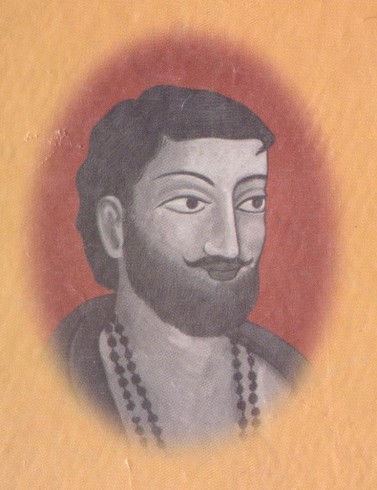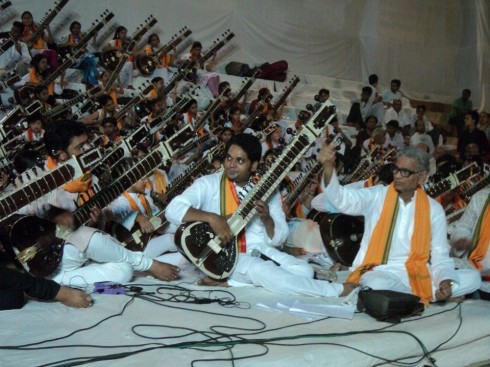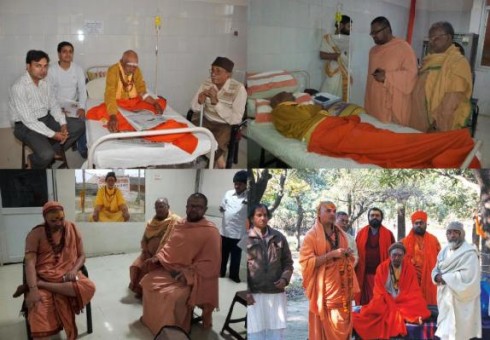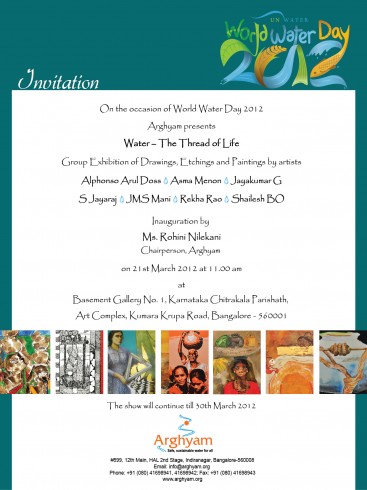Search results for ganga (45)
Hindol Deb – Swar Ganga Music Foundation
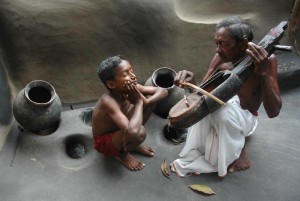
http://www.myspace.com/hindoldeb
The origins of Indian classical music can be found in the oldest of scriptures, part of the Hindu tradition, the Vedas. It has also been significantly influenced by Indian folk music, and Hindustani music has been influenced by Persian music. The Samaveda, one of the four Vedas, describes music at length. The Samaveda was created out of Rigveda so that its hymns could be sung as Samagana; this style evolved into jatis and eventually into ragas. Indian classical music has its origins as a meditation tool for attaining self realization. Bharat’s Natyashastra was the first treatise laying down fundamental principles of dance, music and drama. Read More: > HERE <
One of the upcoming sitar player and composer of his generation, Hindol started learning the Sitar at the age of five from his father, Sri. Panchanan Sardar. Later, he was groomed under the guidance of Pt. Deepak Choudhury, a senior disciple of Pt. Ravi Shankar. He graduated from the Prayag Sangeet Samiti under Allahabad University with a gold medal and is a recipient of the Sahitya Kala Parishad scholarship and the National Scholarship for Hindustani Classical Music in Sitar.
Hindol has been pursuing his dream intensely and is on his way to establish himself as a talented, upcoming young musician, giving several performances at many festivals in India and abroad. He has composed and played his music for various plays and ballets.
One striking quality about Hindol is the sense of maturity in his performance, which is unique at his age. With the deep resonating tone of his instrument, each note makes its presence felt and nothing fades away in ambiguity. His aesthetical understanding is rooted deep in spirituality. Simultaneously, he has also accomplished himself as a composer, exploring the infinite combinations in the crossover of Indian music with various other genres like Western Classical, Jazz, Blues, Electronica, Flamenco and folk music.
Recently, he was invited by the French government, with a residency scholarship, to work with other musicians and experiment with different genres like Jazz, Blues and electronic music, along with Indian classical music and performances. He was also invited by the Swedish government as the representative of India, with the musicians from fourteen different countries, to teach and play each other’s music and to perform at the ETHNO festival in Sweden. He has also toured Belgium and Greece to take part in many concert festivals.
Apart from being a performer, he is also a dedicated teacher and conducts workshops of Hindustani music, improvisation techniques and Indian Classical music appreciation in India and abroad.
Shri. Hindol Deb Plays Raag Hemant on the Day 1 of SwarGanga Music Festival 2008. The festival spanned for two days 20th and 21st December 2008. For more information visit www.swarganga.org.
SwarGanga Music Foundation, Atlanta, GA and SwarGanga Trust, Thane, India are non-profit organizations started by Adwait Joshi to promote young and upcoming artists in the field of North Indian Classical Music and spread the knowledge of North Indian Classical Music to people all over the world. SwarGanga currently has over 2 million hits from 147 different countries every year. Thanks to you all for making this site so popular.here.events page or to see any classical music events upcoming in your area please visit the event calendar.
To learn about different concepts of classical music such as sur, patti, taal, raags, please go through the series of articles starting . For a list of events organized by SwarGanga please visit www.swarganga.org . Your feedback helps us improve the website. So please respond by sending us an email .
The Energy [R]evolution demonstrates how the world can get from where we are now, to where we need to be in terms of phasing out fossil fuels, cutting CO2 while ensuring energy security. This includes illustrating how the world’s carbon emissions from the energy and transport sectors alone can peak by 2015 and be cut by over 80 percent by 2050. This phase-out of fossil fuels offers substantial other benefits such as independence from world market fossil fuel prices as well as the creation of millions of new green jobs. http://www.greenpeace.org/energyrevolution
Sri Ganga River of Life Festival 2010
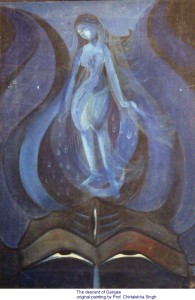
http://sivanandaonline.org/gangadussehra
Gangapujan Dashahara or Dussehra *
* The Descent of the River Ganges, Srimad Bhagavatam 5th Canto 17the Chapter Summary by HDG Srila A.C. Bhaktivedanta Swami Prabhupad.
Ganga Dussehra is the annual celebration of the most sacred of Hindu rivers, Ganga, or the Ganges. The celebration lasts for ten days from the new moon at the beginning of Jyaistha (amanta reckoning). The last day, 10 Jyaistha, is the holiest of them all (this normally occurs in June in the Gregorian calendar, or occasionally at the end of May). Devotees are expected to bathe in the Ganga. If they cannot reach the banks of the river, many devotees will use water drawn from the Ganga that is kept at home to bathe. Alternatively, the devotee will bathe in ordinary water whilst invoking Ganga by prayer. This bathing is considered to impart purity from sin.
Ganga Dussehra: Swami Sivananda’s „Hindu Fasts and Festivals“ and Swami Krishnananda’s „Spiritual Import of Religious Festivals“ have detailed descriptions of the festivals listed here. Click here for ordering details. This Spiritual Calendar is for worships held at the Divine Life Society, Rishikesh, India. Some of the dates may not necessarily hold true for other parts of the world. http://www.dlshq.org/calendar.htm
Sri Ganga Dussehara (Jayesht Shukl Dashmi) 21st June 2010 – This day is auspicious because on this day the sacred Ganges descended in the earth. It can be called birthday of Ganga. A dip in the Ganges or in any other river invoking Goddess Ganges, is beneficial and is said to be purified from ten sorts of sins. Worship of the river deity is done by incense, light, sandal wood, flowers, milk, etc.. Flour balls are fed to aquatic animals.
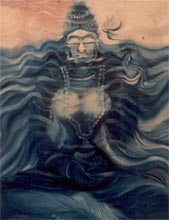
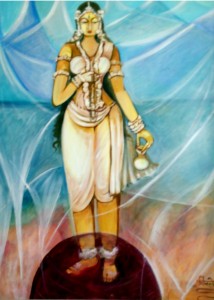
There was a ruler named Sagar. He performed Ashua Medha Yageya. God Indra stole away the ashva (Horse). Sagar’s grandson Anshuman took over the responsibility of the search of the horse. After searching all over, he reached Netherlands with 60,000 followers, where he saw god personified as Kapil saint, was under meditation and the horse was grazing nearby.
The followers of Anshuman shouted, “thief-thief”. Thereupon Kapil rishi opened his eyes and by the blazing lighting of which all were reduced to ashes. For the final cremation ritual of those dead, Bhagirath undertook severe austerities. B’rhma when pleased and asked him to demand a boon. Bhagiratha requested for the descent of Ganges on land. B’rhma agreed but expressed his apprehension if the earth could shoulder the weight and flow of the Ganges, in that case of Bhagirath should invoke God Siva. When Siva agreed to hold the fall of Ganges, B’rhma let it loose from the heavens (swarga lok). The Ganges was then interlocked in the tufts of Siva and Bhagirath’s purpose, of washing the ashes of this ancestors in the water of the Ganges, remained still. There upon Bhagirath invoked Siva, who when please, released the Ganges as river Ganges on the land. The release of the sacred water of the Ganges and its flow through different cities of India is very fortunate, pious, and auspicious for the Hindus of India.
Ganges was not merely a river. She (Goddess Ganga) was devoted to the service of lord K’rsna in the heavens (Swarge-Baikunth). She was thus very near the lord, which made Radha jealous. later cursed her to go down to earth and flow as a river. Ganga, in retaliation, also cursed Radha that you will be close to K’rsna, yet you will always imagine him far away, tolerate separatism and never be peaceful. Thus since then Gange flows as a Ganges river, under the ancient curse of Radha and under the modern curse of city pollution. In the modern times of Kaliyuga, Ganges is of utmost and importance, as according to Narade Purana, all pilgrimages were of influence in Sateya yuga then Pushkar in Treta and Kurukshtra in Dwapar Yuga.
Article by Prof. Chitralekha Singh
Dean: Institute of Visual, Performing Arts & Research, Mangalayatan University, Beswan, Aligarh. Arts Visit at: www.artistchitralekha.com, e-mail: chitralekha@artlover.com, mob . 91 9319103482
IYENGAR YOGA & SAVE GANGA MOVEMENT
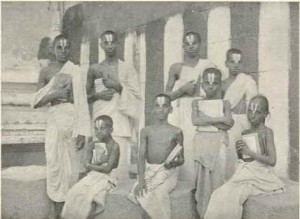
Iyengar Vedic Students 1909
The World’s First Sage Patanjali temple
„Health is firmness in body, stability in mind, and clarity in thinking. If a mirror is clean, it reflects objects clearly….health is the mirror of man.“ – B.K.S. Iyengar
Bellur Krishnamachar Sundararaja Iyengar (Kannada: ಬೆಳ್ಳೂರ್ ಕೃಷ್ಣಮಾಚಾರ್ ಸುಂದರರಾಜ ಐಯಂಗಾರ್, Tamil: பெல்லூர் கிருஷ்ணமாச்சார் சௌந்தரராஜா ஐயங்கார்), (generally known as Yogacharya B. K. S. Iyengar) (Born December 14, 1918 in Bellur, Kolar District, Karnataka, India) is the founder of Iyengar Yoga. He is considered one of the foremost yoga teachers in the world and has been practicing and teaching yoga for more than 75 years. He has written many books on yogic practice and philosophy, and is best known for his books Light on Yoga, Light on Pranayama, and Light on the Yoga Sutras of Patanjali. He has also written several definitive yoga texts. Iyengar yoga centers are located throughout the world, and it is believed that millions of students practice Iyengar Yoga.
He was awarded the Padma Shri in 1991, and the Padma Bhushan in 2002. In 2004, Iyengar was named one of the 100 most influential people in the world by Time Magazine. Read More: > HERE <
The Patanjala Yoga Kendra was established in 1993 on the banks of the Holy River Ganges in Rishikesh, the world capital of Yoga. The method of Yoga that is taught is Iyengar Yoga, as developed and taught by Shri Guruji, B.K.S. Iyengar, the world-famous Yoga Teacher. Guruji’s method is firmly based in the ancient Indian tradition of Yoga as defined in the Yoga Sutras of Patanjali. Usha Devi is the resident Yoga Instructor.
Iyengar Yoga teaches strength and stamina, flexibility and balance, concentration and meditation. Iyengar Yoga begins with physical awareness, but goes beyond to embrace emotional and spiritual growth. As students learn to extend consciousness to each part of their bodies, they experience a concentrated focus on the moment. In time, this concentrated focus (Pratyahara) becomes an integral part not just of a yoga practice, but of daily life.
Welcome to Save Ganga Movement – A Gandhian Non-violent Movement to Save the Ganga, symbolizing all rivers and water bodies and the Giriraj Himalayas, symbolizing all mountains, forests and wildlife. Gandhi symbolizes a culture of Truth and non-violence, i.e. a culture of pursuit of ethical perfection as the ultimate goal of life and pursuit of selfless ethical life of universal love as it’s means. The Surest and Perhaps the Only Solution to Our Impending Catastrophic Global Ecological Crises: Go Through Gandhi the Apostle of Truth and Non-violence of our Age.
- IYENGAR – BELLUR SCHOOL TRUST (BKSSNT)<
- Monasteries Environmental Himalayaprotection <
- SAVE MOTHER EARTH, SAVE GANGA & YAMUNA <
- Meet Iyengar Yoga, studies, friends, fans at fb <
- Meet Save Ganga Movement, friends at fb <
- Meet Save the Ganga (Ganges) River, friends at fb <
- Meet Save Yamuna to save Vrindavan! at fb <
- Meet M.K. Gandhi Institute for Nonviolence, studies, friends at fb <
KUMBHA MELA 2010, GANGA, HOLY RIVERS

Kumbh Mela (Devanagari: कुम्भ मेला) is a mass Hindu pilgrimage. It occurs after every twelve years and rotates among four locations: Prayag (Allahabad) at the confluence of the Ganga and Yamuna and mythical Saraswati river, Haridwar along the Ganga river, Ujjain along the Kshipra river and Nashik along the Godavari river. The Ardh Kumbh Mela is celebrated every six years at Haridwar and Prayag, while the Purna (complete) Kumbh takes place at four places Prayag (Allahabad),Haridwar,Ujjain,and Nashik after every twelve years. Over 45 days beginning in January 2007, more than 17 million Hindu pilgrims took part in the Ardh Kumbh Mela at Prayag, and on January 15, the most auspicious day of the festival of Makar Sankranti, more than 5 million participated. The Maha Kumbh Mela (‚Great‘ Kumbh Mela) which comes after 12 ‚Purna Kumbh Melas‘ which is after every 144 years is also held at Allahabad. The 2001, Maha Kumbh Mela was attended by around 60 million people, making it the largest gathering anywhere in the world. Read More > HERE <
The observance of Kumbh Mela dates back many centuries in Ancient India, to the Vedic period, where the river festivals first started getting organised.
* The Dalai Lama at the Kumbh Mela *
In Hindu mythology, its origin is found the one of the popular creation myths and the Hindu theories on evolution, the Samudra manthan episode (Churning of the ocean of milk), which finds mention in the Bhagavata Purana, Vishnu Purana, the Mahabharata and the Ramayana.
The pilgrimage occurs four times every twelve years, once at each of the four locations. Each twelve-year cycle includes the Maha (great) Kumbha Mela at Prayag, attended by millions of people, making it the largest pilgrimage gathering around the world.
- ABOUT KUMBH: http://www.kumbh2010haridwar.gov.in/
- History Of KUMBH
- About GANGA
- About YOGA
- About HIMALAYAS
- AYURVEDA & PANCHAKARMA
- About Akhara
- Bathing Ghats
- Bathing Dates
- Facilities
- Infrastructure
- Security
- Other Imp. Links
- …and more….
- > Meet Kumbh Mela friends, groups, fans at fb <
SAVE GANGA, AYURVEDA, YOGA
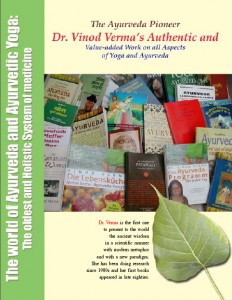
The oldest & holistic System of medicine !
Ma Ganga Retreat above Rishikesh, India

>> Ma Ganga Retreat above Rishikesh, India <<
Retreats and Tours Developed by the American Institute of Vedic Studies
We are happy to announce that our third annual Inner Tantric Yoga Experience: Ma Ganga Retreat, March 9-14, 2010 is now open for early registration. It will feature deeper teachings for serious students and sadhaks and special interaction with Vamadeva and Shambhavi by the sacred Ganga river in a quiet resort above Rishikesh. The resultant experience is transformative and life-changing.
The program will emphasize ritual, mantra, pranayama and meditation to connect one directly to the Shiva and Shakti forces of the Himalayas that represent the soul of India. Shambhavi teaches special mantras and does unique chanting programs for the students. Students are expected from all over the world including from the United States, India, Brazil, Russia and Germany. The retreat is a spiritual celebration of life and the Ganga that can both purify and energize us at a deep level.
SAVE Ganga & Vedic Culture
I also thank our Administration and local people who worked hard to make this event a great success.
I also thank our Administration and local people who worked hard to make this event a great success.
Mamata Banerjee @MamataOfficial
The huge congregation at Ganga Sagar has ended peacefully. About 20 Lakh pilgrims from all over the country and outside took holy dip on this auspicious occasion. It is just like Kumbh Mela.
I thank all the pilgrims who visited our state to take part in Ganga Sagar Mela. I also thank our Administration and local people who worked hard to make this event a great success.
States, Donors Must do More to Tackle Rising Disaster Risk: U.N. http://wp.me/p1NvY3-6L1 http://fb.me/7mns0m8Kx
Obama to Slash Methane Emissions 45% by 2025 http://wp.me/p1NvY3-6KY
#Nepal #Electricity Authority (NEA) asks #WorldBank to pull out of Khimti-Dhalkebar Transmission Line project… http://fb.me/3JKOPrZzK
Timmermans says British MEPs’ recollections of his Chief Scientific Advisor comments are science-fiction http://www.europeanvoice.com/article/timmermans-says-meps-recollections-of-his-csa-comments-are-science-fiction/ …
#Lobbyfacts analysis: 66.8% #lobbyists with @Europarl_EN access are corporate lobbyists http://bit.ly/156KsB2
#Lobbyfacts reveals serious problem of unreliable overall numbers of #lobbyists reported in EU #TransparencyRegister http://lobbyfacts.eu/news/
Tax wars: Europe lands blow against Amazon – http://www.taxjustice.net/2015/01/16/tax-wars-europe-lands-blow-amazon/ …
„I refuse to live in a world in which theft is accepted“ Check out #whistleblowing video by @batoryfundacja: http://anticorru.pt/1u6AviX #Poland
THIS DAY AT LAW: English Parliament bans Roman Catholicism http://bit.ly/1AmsuTB
UN officials concerned over political violence in Bangladesh http://bit.ly/1BczUhO
News Lens: Wonks disagree over whether IMF contributed to Ebola crisis http://bit.ly/1BxazOx
Swami Vivekananda’s thoughts of over 100 years ago still so meaningful today:
Just read an article on the Bangladesh Chief Justice’s retirement. It is quite normal for a judge’s so called… http://fb.me/3Fd6ewtH0
European Commission not satisfied with Czech response to discrimination of Romani children – Romea.cz http://www.romea.cz/en/news/czech/european-commission-not-satisfied-with-czech-response-to-discrimination-of-romani-children#.VLf0CBLGY-s.twitter …
Protest in front of #Saudi embassy RT @amnestyfrance #JeSuisRaif 1 000 coups de fouet pour un blog.Liberté pour Raif ”
Really interesting interview w @bellingcat founder @EliotHiggins who says he’d like to run as nonprofit in longterm http://ht.ly/HnsEa
#KhaledIdrisBahray RT @Volker_Beck habe Strafanzeige gg. unbekannt wegen Verdacht der Strafvereitelung gestellt https://mopo24.de/nachrichten/gruene-bundestag-strafanzeige-polizei-dresden-3834 … …
A particular national political party along with a Bengali media house is engaged in maligning state political personalities of ruling party
RT @AITCofficial Ruling party at Centre should not bulldoze regional parties & destabilize federal structure: WB CM | http://goo.gl/e9gZFT
RT
2 years ago, 58 states called for a #Syria #ICC referral; victims still waiting for justice. http://bit.ly/1akv2Wb
Nice roundup of new #ICC judges’ pros and cons — but why is helping draft the Rome Statute a “con”? https://justicehub.org/article/new-icc-judges-pros-and-cons … @justice_hub
Saudi blogger’s flogging should outrage world. @CNN op-ed @sarahleah1 http://edition.cnn.com/2015/01/13/opinion/whitson-saudi-flogging/ …
US, EU & UK urge restraint in Bangladesh. Call for genuine talks, investigation for attacks & respect for freedom of expression
Speaking on BBC World News at 07.50 to discuss the deteriorating situation in #Bangladesh
Bangladesh ICT is not the right place to settle political scores http://www.bdinn.com/news/ict-is-not-the-right-place-to-settle-political-scores-toby/ …
Bangladesh ICT orders 49 individuals to respond for commenting on @davidbangladesh contempt charge. More contempt charges to follow?
 অগ্নিভ নিয়োগী @Aagan86
অগ্নিভ নিয়োগী @Aagan86
Great gesture by @MamataOfficial. As a mark of respect for Swami Vivekananda, WB Govt has declared State Holiday today 🙂
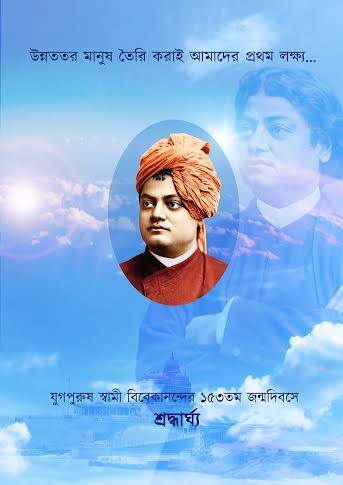
RT @AITCofficial Homage to the epoch maker Swami Vivekananda: WB CM on Facebook
Swami Vivekananda’s thoughts of over 100 years ago still so meaningful today: To do good and to be good, that’s the whole of religion.
On Swami Vivekananda’s 153rd bday, here is another inspirational saying: All power is there within you. You can do anything and everything.
UN chief: India can play major role in climate change, development, human rights http://bit.ly/1CfX2sJ
We Are the Last Generation That Can Fight Climate Change. We Have a Duty to Act http://wp.me/p1NvY3-6Km http://fb.me/3PkLxvMgr
Obama’s India Visit Could Yield Progress on Climate Change and Solar Power http://wp.me/p1NvY3-6Kj
Let’s hope something comes out of this week’s talk re. #humanrights between U.S. and #Burma http://bit.ly/1y4G5SN
Why was the US not represented at the Paris unity and peace rally? White House admits fault. Your views? http://ow.ly/HcFNZ
தை அமாவாசை சிறப்பு சுற்றுலா ரயில் http://www.dinamalar.com/news_detail.asp?id=1159818&device=tw …
Min Samneang from #Cambodia stands up against corruption.#IFightCorruptionBecause #IYC2015 @anticorruption
News Lens: US Congress blocks World Bank move to slash safeguards http://bit.ly/1wPd6Ol
News Lens: When water is privatised, injustice flows freely http://bit.ly/1BaajVt
#Syria|n human rights org says U.S.-led airstrike killed at least 50 civilians late last month while targeting #ISIS http://owl.li/HbQjR
Another reason persecution of #Rohingya in #Burma must end: Dozens of children among 98 Rohingya smuggling victims http://owl.li/HbRHA
Credit Suisse’s U.S. public hearing on Wednesday – http://www.taxjustice.net/2015/01/12/credit-suisses-u-s-public-hearing-wednesday/ …
New on ERRC Blog: Empowering #Roma communities: progress in #Odesa: http://www.errc.org/blog/empowering-roma-communities-progress-in-odesa/51 … #RomaRights #Ukraine
„if #Roma communities are behind the process of bringing about change, things start working differently and better“ http://www.errc.org/blog/empowering-roma-communities-progress-in-odesa/51 …
Pályázati felhívás társadalom-tudományi kutatás elvégzésére: http://www.errc.org/cikk.php?cikk=4342 … via @errctweets
(In #Turkey) #Roma No Longer Invisible:http://www.middle-east-online.com/english/?id=69629 …
The potential of fighting #corruption through data mining: http://anticorru.pt/1y38c4P #ict4d
Worrying development in #Egypt: Appeals court overturns #Mubarak’s corruption conviction despite sound evidence. Don’t let impunity prevail!
Egypt comes full circle. Retrial in Mubarak fraud conviction could see his release from custody http://www.bbc.co.uk/news/world-middle-east-30792001 …
Senior advisor to Bangladesh Opposition leader shot leaving party office. Democracy collapsed in Dhaka http://m.thedailystar.net/#single_news
Bangladesh ICT is not the right place to settle political scores http://www.bdinn.com/news/ict-is-not-the-right-place-to-settle-political-scores-toby/ …
Tax Justice Network @TaxJusticeNet
Searchable #UN Treaty Body Jurisprudence Database Launched by @UNrightswire: https://storify.com/DeinAyurvedaNet/searchable-un-treaty-body-jurisprudence-database-l … via @deinayurvedanet
MAKERS OF BENGALI LITERATURE : RAMPRASAD SEN
MAKERS OF BENGALI LITERATURE : RAMPRASAD SEN
ACADEMIC PAPER
“O my heart, you know not cultivation.
This human soil is lying fallow
and it would have produced gold if cultivated”
The Indian concept of culture (Kristi, samaskriti) is defined in the above three lines. “The sharpening of human sensitivities, feelings, emotions, and sensibilities through art is one of various ways by which man can ‘cultivate’ the soil of life to make it yield golden harvest in return”. Thus the poet Ramprasad Sen wrote about the main concept of Indian Culture as stated by Niharranjan Roy.
“No flattery could touch a nature so unapproachable in its simplicity. For in these writings we have perhaps alone in literature, the spectacle of a great poet, whose genius is spent in realizing the emotions of a child.Willam Blake, in our own poetry, strikes the note that is nearest his, and Blake is by no means his peer.
“Robert Burns in his splendid indifference to rank, and Whitman in his glorification of common things, have points of kinship with him. But to such radiant white heart of child-likeness, it would be impossible to find a perfect counterpart.”
– Sister Nivedita (Margaret Noble:1867-1911) on Ramprasad Sen
en.wikipedia.org/wiki/Sister_Nivedita
belurmath.org/kids_section/24-visit-to-niveditas-school
cwsv.belurmath.org/volume_5/questions_and_answers/in_answer_to_nivedita.htm
Ramprasad created a new form of poetry known as ‘Sakta Padabali’ in Bengali, and a new style of singing called ‘Prasadi’. After Ramprasad there was a remarkable outburst of Sakta poetry in Bengal.
His view of life was liberal. He was against racism, castism and untouchability, and generally opposed the Hindu orthodoxies of the conservative society.
Ramprasad believed that there should not be any religious conflict between various sects and cults, since God is one. He wrote, “One in five, five in one mind, should not go into conflicts.” ( ore eke panc, pance ea, non korna sweshasweshi)
Just as the message of Chatanyadeva was spread through his kirtan-singing and dance in the fifteenth century, Ramprasad’s message spread through his songs in the eighteenth century.
The Family
Ramprasad was born in a Baidya (caste of Ayurvedic doctors) familyof West Bengal. Ramprasad’s ancestor Raja Seiharsha Sen, the court physician of Sultan Fakurddin in the fourteenth century, had received the title of Raja from the Sultan.
The family tree:
Sriharsha – Bimal – binayak-Rosh – Narayan – Sangu or Sang – Sarani – Krittibas – Ratnakar – Nityananda – Jaggannath – Jadunandan – Ranjan – Rajiblochon – Jayakrishna – Rameswar – Ramram – Ramprasad.
Ramprasad made reference to his forefathers, especially Krittibas Sen and his father Ramram Sen. The family initially was staying in Dhalahandi in the district of Birbhum, then shifted to Kumarhatta-Halisahar (then in the district of Nadia). His father was a Sanskrit scholar, an Ayurvedician and a poet.
“Tadangaj Ramram mahakobi gunodham
Sada jara sadaya Abhaiya “
Ramprasad also mentioned the scholarly forefathers, who supported many charities.
The family lost their wealth; Ramprasad’s father did not fare well, and died early.
RAMPRASAD’S LIFE AND TIME:
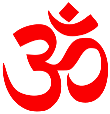
Mishras 2012 Europen Musical tour
Dear Friends,
We are in Varanasi now and wish all of you. We are happy to inform you that our tour for Europe this year will be in October/ November 2012. So we are starting now for booking the Concert dates of Europe and just like to inform you that if you want to book any concert of us then please contact us soon as now we are booking the dates.
We are coming three musician Pandit Shivnath Mishra, myself Deobrat Mishra on Sitar and Prashant Mishra on Tabla. So please contact us soon for any information you need.
Hope to hear from you soon.
Yours, Deobrat Mishra
Sitar Artist.
Contact us at: mishramusic@hotmail.com
Website: www.music-of-benares.com
Cell: 0091-9451586700
Note: we are also sending you a attachment of recent concert photos and Video Link on youtube we did with 108 Sitar players in Varanasi to save holy River Ganges. Please have a look. You can see more picture of it on my facebook account: Deobrat Mishra
My father Pandit. Shivnath Mishra made a history in Varanasi-India to conduct a orchestra of 108 sitar players. Total musician where 151 including Tabla players and Flute players.
Varanasi (Sanskrit: वाराणसी ) is a city situated on the banks of the River Ganges in the Indian state of Uttar Pradesh, 320 kilometres (199 mi) southeast of state capital Lucknow. It is regarded as a holy city by Buddhists and Jains, and is the holiest place in the world in Hinduism (and center of earth in Hindu Cosmology). It is one of the oldest continuously inhabited cities in the world and probably the oldest of India. The Kashi Naresh (Maharaja of Kashi) is the chief cultural patron of Varanasi and an essential part of all religious celebrations.The culture of Varanasi is closely associated with the River Ganges and the river’s religious importance. The city has been a cultural and religious centre in North India for several thousand years.
The Benares Gharana form of Indian classical music developed in Varanasi, and many prominent Indian philosophers, poets, writers, and musicians resided or reside in Varanasi, including Kabir, Ravidas Their Guru Swami Ramanand, Trailanga Swami, Munshi Premchand, Jaishankar Prasad, Acharya Shukla, Ravi Shankar, Girija Devi, Hariprasad Chaurasia, and Bismillah Khan. Tulsidas wrote Ramacharitamanas here, and Gautama Buddha gave his first sermon at Sarnath located near Varanasi (Kashi). Varanasi is home to four universities: Banaras Hindu University, Mahatma Gandhi Kashi Vidyapeeth, Central Institute of Higher Tibetan Studies and Sampurnanand Sanskrit University. Residents mainly speak Hindi and Kashika Bhojpuri, which is closely related to the Hindi language. People often refer to Varanasi as “the city of temples”, “the holy city of India”, “the religious capital of India”, “the city of lights”, and “the city of learning.”
Mishras Press release:
Very rare to see three generation master musician’s on same stage.
11th GENERATION FATHER AND SON SITAR MASTERS of Benares Gharana
From their home city of Benares, an ancient spiritual centre of traditional music and Indian culture, “The Mishras” are bringing classical North Indian Ragas and meditative music to the world audience, gifting the audience with a fabulous performance and a spiritual experience. Join this father and son duet of two of the worlds finest Sitar Artist and Prashant Mishra on Tabla grandson of Pandit Shivnath Mishra as they inspire one another to new levels of loving interplay.
PANDIT SHIVNATH MISHRA
Pandit Shivnath Mishra was born on the 12th of October 1943, in Varanasi (North India). Also known as “Legend of the Sitar”, he is the 10th generation of the prominent Benares Gharana lineage of top class singers including Pandit Bade Ramdas Mishra and Panditji Great Grand Father. Since childhood, his highly musical family could see signs of a masterful musician in him. When Panditji was five years old, he began studying vocal music with his father, Badri Prashad Mishra, and his uncle-guru, Pandit Mahadev Prashad Mishra. However, when he was eight his musical inclination led him to study the sitar. In a family of great classical Indian vocalists, he was the first one who mastered the sitar.
Due to the vocal influence from his family as well as the Benares Gharana tradition, he is one among few artists in Contemporary India who ‘sing inside’ while playing a musical instrument. His lively, powerful and unique style has praised him with innumerous titles by the most representative authorities and institutions of music in and outside India. In 1966, when he was only twenty-three, he received a gold medal in the All India Music Conference, in Calcutta.
1979 marks the beginning of his performances abroad. Sine then, he has been constantly on tour in many foreign countries, among them Germany, Italy, France, Luxembourg, Switzerland, Austria, Japan, Holland etc. In 1999, he gave his first concert in the USA and Canada. During his tours, he has performed with several international jazz artists such as John Handy, Paul Horn, David Freezen, Ben Conrad, Berred Kworrase, George Figgler Aimester among others. Moreover, he participated in many conferences and recitals including the Condolence Metal of Late Prime Minister Mrs. Indira Gandhi, in Germany. He also took part in programs broadcast by the BBC Television and the German Radio.
Being one of India’s premiere sitar artists of all times, Pandit Shivnath Mishra was the Head of the Music Department at the Sampurnanand Sanskrit University of Benares, in Varanasi, for 36 years. At this time, in 1994, he formed the “Music of Benares” which consists of a group of North Indian (Hindustani) classical musicians whose aim is to familiarize audiences all over the world with Hindustani music in general and the Benares Gharana in particular. What is characteristic of the Benares Gharana is exactly the singing of the Thumri, a light Indian classical music that is highly ornamental and thus very emotional and expressive. At a time when many different Gharanas mix with each other, the “Music of Benares” group keeps this ancient tradition alive.
Incorporation of this style with the “Jugalbandi” presentation, in which there are two solo artists sharing the stage, has created a unique synthesis of classical and folk that appeals to audiences everywhere. But this is not just Jugalbandi, this is a duet between a Guru and his Shishya (disciple) and, in this case, between father and son. Seeing this special interaction on stage is no doubt an unforgettable and mesmerizing experience.
Deobrat Mishra – biography
Deobrat Mishra is no doubt one of the most energetic and innovative sitar artists of India. Selectivity, melody and rhythmic complexity are typical features in his lively playing style.
Born in 1976, he represents the 11th generation of the Benares Gharana tradition. As a young child he studied tabla with his mother, Pramila Mishra, who is the granddaughter of the well-known tabla player Pandit Baiju Mishra. He started by studying vocal music with his father at the age of five and began his sitar lessons a year later. That same year, after only six months of studying the sitar, he gave his first public performance on stage. Five years later, he performed for the first time on the All India Radio.
Since 1994 he has been touring throughout Europe with his father. In the same year he was chosen to receive the award of the best young sitar player of India. In 2000 he received the “Jewels of Sound Award” in Mumbai. His many projects include music workshops, solo performances for radio and television as well as world music programs with Indian and European artists. Moreover, he is the one in charge of cultural events and music lessons provided by the Academy of Indian Classical Music, the school he founded along with his father, Pandit Shivnath Mishra, in 2006.
Recently, he received a Masters degree in sitar from the Prayag Sangit Samiti in Allahabad. Among many other projects, the Mishras performed and recorded their music with the Western Symphony Orchestra of Italy in 2005. Nowadays, they fully dedicate their art to similar projects including annual tours around the world.
Above all, the Mishras (father and son) serve as two of India’s leading cultural ambassadors of our times
Prashant Mishra is one of the best young Tabla player of benares music tradition. When he was five he started to learn tabla with the family member of Biru Mishra of Varanasi also studying Tabla presently with Mr.Chakkan lal Mishra(Student of Great Tabla player Anokhelal Mishra..
Soon after few years of hard practice with his grandfather Pandit Shivanath mishra and uncle Deobrat mishra he was able to perform with Mishras His skills beautifully compliment and support the Mishras in their concerts.
http://timesofindia.indiatimes.com/topic/Aviral-and-nirmal-flow-of-the-Ganga/news
In 2004 he won first prize in Tabla competition organized by Sangeet Natak Academy Uttar Pradesh India. He received many awards for his tabla playing at many different places. The Mishras tour will help to support the Academy Of Indian Classical Music School in Varanasi, India.
Additionally, the Mishras support their Academy of Music in Benares, India where they keep alive the tradition of their music amongst young musicians. Every January and February, the Academy is open to international students of all ages and skill levels. These study tours to India are a cultural experience combining ashram style living and intensive music instruction in one of the world’s oldest cities.
Visit: www.benaresmusicacademy.co
For more information, contact Deobrat Mishra: mishramusic@hotmail.com
Visit our website: www.music-of-benares.com
http://www.gangaaction.com/
http://
http://
#Previous #articles #videos #benares #gharana
#Previous #articles #save #ganga #water #humanrights
Note: Mishra or Misra (Hindi: „मिश्र“ „मिश्रा“) is a Hindu Brahmin surname found mostly in the northern and central parts of India. It is one of the most widespread Brahmin surnames in the fertile Gangetic plain region and in the Indian states of Delhi, Bihar, Uttar Pradesh, Uttarakhand, Madhya Pradesh, Rajasthan, Orissa, Assam and West Bengal. It is also found in countries such as Guyana and Trinidad and Tobago under the anglicized version of Misir, due to migration owing to agricultural/plantation employment. The surname is also found in Nepal, Fiji and Mauritius, as well as in other Indian diaspora communities.
In Hinduism, Brahmin refers to the class of educators and preachers. It is the highest class in the caste system. There are many references in the Ramayana and Mahabharata about the importance of a Brahmin. In the Vedic period, the Brahmins preferred isolation and solely dedicated their life to propagating knowledge and Dharma. However Misras have historically been martial Brahmins and in earlier years, many were drafted into the army.
The Human Right to Water – World Water Day 2012
http://www.internationalrivers.org
http://www.unwater.org/worldwaterday
http://www.sankatmochanfoundationonline.org/save_ganga.html
News(23.03.2012): NEW DELHI: Environmentalist GD Agarwal, 80, who is on a fast-unto-death since January 15 to save the Ganga river, on Friday agreed to end his fast after the government agreed to his demands, his supporters said. „He will …See more
On the occasion of World Water Day 2012 the Sankat Mochan Foundation (SMF), an organisation working for the cause of Ganga for about three decades, is going to launch a new online campaign -STOP the Sewage: Clean Ganga NOW.
World Water Day has been observed on 22 March since 1993 when the United Nations General Assembly declared 22 March as World Day for Water.[1]
This day was first formally proposed in Agenda 21 of the 1992 United Nations Conference on Environment and Development (UNCED) in Rio de Janeiro, Brazil. Observance began in 1993 and has grown significantly ever since; for the general public to show support, it is encouraged for the public to not use their taps throughout the whole day, the day has become a popular Facebook trend.
The Ganges , is a trans-boundary river of India and Bangladesh. The 2,525 km (1,569 mi) river rises in the western Himalayas in the Indian state of Uttarakhand, and flows south and east through the Gangetic Plain of North India into Bangladesh, where it empties into the Bay of Bengal. By discharge it ranks among the world’s top 20 rivers.
Water – The Thread of Life, a group exhibition of Contemporary Artists, Arghyam, March 21-30, 2012, Karnataka Chitrakala Parishath, Bangalore http://www.indiawaterportal.org/event/24761
Welcome to MC Mehta Environmental Foundation
Current Projects The Plight of the Ganga
M. C. Mehta, “In the Public Interest”
We believe that if, all of us unite and take proper care in protection and conservation of the limited natural resources, we can give our children a better tomorrow. It is possible only through community participation and awareness.
MCMEF has been actively involved in creating awareness among NGO’s,Lawyers,Scientists,Senior Officials, Academicians,Students & Youth through training and capacity building programmes, seminars,workshops,declamation contests and other grass roots level activities.
This ancient and magnificent river is now under serious threat due to the construction of hydroelectric dams along the upper reaches of the Ganga. This will devastate local ecology, wildlife and communities by tunneling in river-flow, effectively drying up the Ganga in these areas.
Further downstream, the Ganga is already suffering from the effects of extensive deforestation, and continues to be used as a dumping ground for untreated industrial and domestic waste. Religious tourism has also led to the proliferation of polythene waste in her waters.
As a result of climate change, the Gangotri glacier is rapidly receding. This will have profound implications on India’s water and food security.
# video Anna Hazare on G D Agrwal’s condition Anna ji speaking on G.D. Agrwal’s condition. He will also be going to meet G.D.Agrwal later today. || अन्ना जी, जी.डी. अग्रवाल के स्वास्थ्य के बारे में बात करते हुए| वो आज शाम को उनसे मिलने भी जायेंगे|
http://www.savegangamovement.org
http://www.indiawaterportal.org
http://www.indiaenvironmentportal.org.in
http://chimalaya.org/2012/03/20/anxious-wait-for-scientists-on-rio20-talks
http://www.scidev.net/en/science-and-innovation-policy/science-at-rio-20
http://chimalaya.org/2011/06/23/bringing-back-himalayan-watermills-to-life
Previous related #article #videos Hindol Deb – Swar Ganga Music Foundation
http://en.wikipedia.org/wiki/Right_to_water as a human right under international law.
http://www.ohchr.org/EN/Issues/Development/Pages/DevelopmentIndex.aspx
http://en.wikipedia.org/wiki/Environmental_law
http://en.wikipedia.org/wiki/Environmental_impact_assessment
chinadialogue http://www.chinadialogue.net
The current surge in land acquisitions http://farmlandgrab.org by foreign countries and private companies could lead to regional tensions over water rights, warns a new report by the Stockholm International Water Institute published last week. ä��页 home > 每日星球 the daily planet Global land deals suck rivers dry Beth Walker
Another water battle looming Pakistan is gearing up for a new fight with India, reports Athar Parvaiz from Ladakh. At the centre of the latest row is a dam funded by international efforts to tackle global warming. http://www.chinadialogue.net/4825-Another-water-battle-looming
Fighting India’s mega-dams Popular protests against the construction of a vast network of dams in the Brahmaputra valley have gathered impressive momentum. Tanmoy Sharma reports from Assam. http://www.chinadialogue.net/ 4799-Fighting-India-s-mega-dams
River Interlinking India Most environmentalists around India heaved a sigh of relief on Friday when Pranab Mukherjee, the country’s Finance Minister, did not say a word about the plan to interlink India’s rivers, nor allocate any money for that purpose.
Mountain Minorities and Indigenous Peoples

NGO Development Projects Active in Tibet
About ICIMOD – The International Centre for Integrated Mountain Development, ICIMOD, is a regional knowledge development and learning centre serving the eight regional member countries of the Hindu Kush-Himalayas – Afghanistan, Bangladesh, Bhutan, China, India, Myanmar, Nepal, and Pakistan – and based in Kathmandu, Nepal.
Globalisation and climate change have an increasing influence on the stability of fragile mountain ecosystems and the livelihoods of mountain people. ICIMOD aims to assist mountain people to understand these changes, adapt to them, and make the most of new opportunities, while addressing upstream-downstream issues. We support regional transboundary programmes through partnership with regional partner institutions, facilitate the exchange of experience, and serve as a regional knowledge hub. We strengthen networking among regional and global centres of excellence. Overall, we are working to develop an economically and environmentally sound mountain ecosystem to improve the living standards of mountain populations and to sustain vital ecosystem services for the billions of people living downstream – now, and for the future.
International Mountain Day, celebrated on December 11, gives us an opportunity to reflect on the relevance of mountains for the world. This year the International Mountain Day theme focuses on indigenous peoples and other minorities living in the mountains. The purpose is both to highlight the threats and challenges faced by these communities, and to acknowledge the invaluable knowledge they have and the contributions they can make towards overcoming global challenges of poverty and loss of diversity in a rapidly changing world.
A majority of the world’s indigenous women and men live in mountain regions, many on the margins of society and facing poverty and exclusion. The Hindu Kush-Himalayan region has some of the highest diversity of indigenous peoples and other minorities in the world. An ICIMOD report identified more than 600 living languages in the Himalayas, 400 spoken by less than 100,000 people. According to current forecasts, ninety per cent of all languages could disappear within 100 years. The loss of these languages not only erodes an essential component of a group’s identity, it is also a loss to heritage for all humankind.
The UN General Assembly adopted the UN Declaration on the Rights of Indigenous Peoples in September 2007, marking an important step in international efforts to preserve the identity of indigenous peoples. However, implementation has a different speed and different levels of commitment in different countries.
In agricultural terms, mountains are often considered ‘marginal lands’, unsuitable for modern commercial farming which focuses on cultivation of single crop varieties for large markets. Indigenous mountain people and other mountain communities continue to use traditional practices and techniques including sophisticated terracing systems, water transportation and irrigation schemes, and a combination of pasture, forestry and farming practices. Indigenous women and men serve as custodians of this traditional knowledge on how to farm under difficult mountain conditions, and how to conserve important reservoirs of agricultural biodiversity.
They sustainably farm a wide variety of crops that are adapted to a range of different elevations, slope conditions, and micro-climates, and this knowledge will be of great, if as yet little noticed, value in the world’s efforts to adapt to climate and other drivers of change. The autonomous adaptation practiced by mountain communities consists of community-based interventions that address underlying causes of vulnerability and reduce the risk of possible adverse impacts of climate change by building upon the existing rich indigenous knowledge base on adaptation to environmental change and helping to strengthen the resilience of the communities. Women especially play a critical role in gendered indigenous knowledge. Their roles and expertise have yet to be acknowledged, but has great potential for adapting to multiple drivers of change.
Indigenous mountain communities are connected to the land, the environment, and natural resources in ways that are often inextricably intertwined and therefore expressed in spiritual and socio-cultural terms. Respecting this worldview, and preserving the languages, music, artwork, folk tales, culture, meanings, and myths that express it, is critical for the survival of indigenous communities in mountain areas. This ‘intangible heritage’ also enriches the global community, providing inspiration and insights for realising a more sustainable relationship between humankind and the environment.
A scene from Tibetan Documentary „Leaving Fear Behind,“ shows a nomad school in Tibet (Amdo) working to preserve Tibetan Language and culture as it’s very existence is under threat from Chinese Government policies. Find out more: http://studentsforafreetibet.org Leaving Fear Behind: The Film the Chinese Government Doesn’t Want the World to See. // sumit sadhak practicing handstand in himalyas on the bank of ganga river one of the most important places for yogis.
The involvement of indigenous mountain communities is an important prerequisite for sustainable mountain development. Therefore, as governments work toward addressing mountain development priorities, it is critical that they live up to their commitments outlined in the UN Declaration on the Rights of Indigenous Peoples.
We hope that this year’s International Mountain Day will help to increase awareness of the central role of Minorities and Indigenous Peoples for mountain development, and to motivate all citizens, policy makers, and development actors to recognise the importance of their contribution to sustainable development. We trust that the Day will encourage organisations to invite indigenous and traditional mountain communities to participate actively in national and international efforts to understand and adapt to the multiple drivers of change, including climate change, in the mountains of the world.
With best wishes, Andreas Schild http://www.icimod.org
Culture and Development – Placing culture at the heart of development policy constitutes an essential investment in the world’s future and a pre-condition to successful globalization processes that take into account the principles of cultural diversity. It is UNESCO’s mission to remind all States of this major issue.
As demonstrated by the failure of certain projects underway since the 1970s, development is not synonymous with economic growth alone. It is a means to achieve a more satisfactory intellectual, emotional, moral and spiritual existence. As such, development is inseparable from culture. Strengthening the contribution of culture to sustainable development is a goal that was launched in connection with the World Decade for Cultural Development (1988-1998). Ever since, progress has been made thanks to a corpus of standard-setting instruments and demonstration tools such as cultural statistics, inventories, regional and national mapping of cultural resources.
In this regard, the major challenge is to convince political decision-makers and local, national and international social actors to integrating the principles of cultural diversity and the values of cultural pluralism into all public policies, mechanisms and practices, particularly through public/private partnerships.
This strategy will aim, on the one hand, at incorporating culture into all development policies, be they related to education, science, communication, health, environment or tourism and, on the other hand, at supporting the development of the cultural sector through creative industries. By contributing in this way to poverty alleviation, culture offers important benefits in terms of social cohesion. Read more: http://portal.unesco.org/culture/en
The Challenge of Human Rights and Cultural Diversity – United Nations Background Note by Diana Ayton-Shenker:
The end of the cold war has created a series of tentative attempts to define „a new world order“. So far, the only certainty is that the international community has entered a period of tremendous global transition that, at least for the time being, has created more social problems than solutions.
The end of super-power rivalry, and the growing North/South disparity in wealth and access to resources, coincide with an alarming increase in violence, poverty and unemployment, homelessness, displaced persons and the erosion of environmental stability. The world has also witnessed one of the most severe global economic recessions since the Great Depression of the 1930s.
At the same time, previously isolated peoples are being brought together voluntarily and involuntarily by the increasing integration of markets, the emergence of new regional political alliances, and remarkable advances in telecommunications, biotechnology and transportation that have prompted unprecedented demographic shifts.
The resulting confluence of peoples and cultures is an increasingly global, multicultural world brimming with tension, confusion and conflict in the process of its adjustment to pluralism. There is an understandable urge to return to old conventions, traditional cultures, fundamental values, and the familiar, seemingly secure, sense of one’s identity. Without a secure sense of identity amidst the turmoil of transition, people may resort to isolationism, ethnocentricism and intolerance.
This climate of change and acute vulnerability raises new challenges to our ongoing pursuit of universal human rights. How can human rights be reconciled with the clash of cultures that has come to characterize our time? Cultural background is one of the primary sources of identity. It is the source for a great deal of self-definition, expression, and sense of group belonging. As cultures interact and intermix, cultural identities change. This process can be enriching, but disorienting. The current insecurity of cultural identity reflects fundamental changes in how we define and express who we are today. Read More: * HERE*
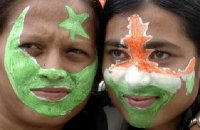
Benares Gharana Music Concerts Austria
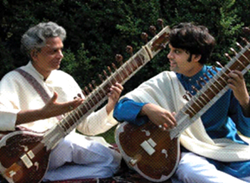
Varanasi (Sanskrit: वाराणसी VÄ�rÄ�ṇasÄ�)is a city situated on the banks of the River Ganges in the Indian state of Uttar Pradesh, 320 kilometres (199 mi) southeast of state capital Lucknow. It is regarded as a holy city by Buddhists and Jains, and is the holiest place in the world in Hinduism (and center of earth in Hindu Cosmology). It is one of the oldest continuously inhabited cities in the world and probably the oldest of India. The Kashi Naresh (Maharaja of Kashi) is the chief cultural patron of Varanasi and an essential part of all religious celebrations.The culture of Varanasi is closely associated with the River Ganges and the river’s religious importance. The city has been a cultural and religious centre in North India for several thousand years.
The Benares Gharana form of Indian classical music developed in Varanasi, and many prominent Indian philosophers, poets, writers, and musicians resided or reside in Varanasi, including Kabir, Ravidas Their Guru Swami Ramanand, Trailanga Swami, Munshi Premchand, Jaishankar Prasad, Acharya Shukla, Ravi Shankar, Girija Devi, Hariprasad Chaurasia, and Bismillah Khan. Tulsidas wrote Ramacharitamanas here, and Gautama Buddha gave his first sermon at Sarnath located near Varanasi (Kashi). Varanasi is home to four universities: Banaras Hindu University, Mahatma Gandhi Kashi Vidyapeeth, Central Institute of Higher Tibetan Studies and Sampurnanand Sanskrit University. Residents mainly speak Hindi and Kashika Bhojpuri, which is closely related to the Hindi language. People often refer to Varanasi as „the city of temples“, „the holy city of India“, „the religious capital of India“, „the city of lights“, and „the city of learning.“ Read More: > HERE <
Seit mittlerweile sieben Generation musizieren Vater und Sohn der Mishra Familie – Pandit Shivanth und Deobrat Mishra – gemeinsam. Music of Benares bringen mit Ihrer Musik den Zauber der mehr als 2000 Jahre alten Tradition der Sitar und Tabla zu uns.Ihre Musik lebt überwiegend von der Improvisation und folgt dem Ausdrucksreichtum der menschlichen Stimme. Deobrath Mishra wurde mehrmals als bester Sitarspieler Indiens ausgezeichnet.
Freitag 29.10.2010, Galerie Werkstatt NUU, www.nuu.at , Gesangs/Sitar oder Tabla Workshop mit Deobrath Mishra nach tel. Vereinbarung am 1, 2 und 3. November unter 0699 19429921 möglich!
Samstag 30.10.2010, 19 Uhr: Minoriten Kloster Tulln www.minoriten.at The Sound of India – Music from Benares, Shivnath & Deobrath Mishra, Sithar, Meister der klassischen indischen Musik, Festsaal/Klubräume – Eingang Nibelungenplatz. http://weltladen-tulln.at Weltladen Tulln: Wir feiern! Der Weltladen Tulln ist 5 Jahre alt geworden! Wir feiern gemeinsam mit den Vereinen Rainbowtrust (10 Jahre alt) und Miteinander leben (20 Jahre alt).
Gharana is a traditional style and way of teaching and performing Indian classical music. This style is many hundreds of years old and has been passed from master to student, from generation to generation. There are many Gharanas or styles, one of the most prominent ones being the Benaras Gharana. It is also called Varanasi Gharana. Over the years, the Benaras Gharana has produced many outstanding vocal, instrumental and dance performers.Like many traditions, this method of performing music and the great Indian cultural heritage, in general, have been threatened due to the lack of dedicated teachers and students.
A very rare Video clip of three generation’s of master musicians performing on same stage. Concert in Tulln-Austria 2009. Pandit Shivnath Mishra & Deobrat Mishra Sitar Artist from India, Prashant Mishra Tabla player. A paṇḍit (Hindi; Devanagari: पण्डित, Sanskrit: paṇḍita) is a scholar, a teacher, particularly one skilled in Sanskrit and Hindu law, religion, music or philosophy. The English loan word pundit is derived from it. Info Click here
The Guru (teacher)-Shishya (student) relationship which was the hallmark of this system is breaking down. If this tradition is not maintained, very soon it might exist only in textbooks. Pandit Shivnath Mishra and his family have descended from a highly talented musical lineage of Benaras Gharana going back several generations. In order to preserve this heritage, so precious to India, and make it accessible to children, Pt. Mishra and his family decided to create the Benaras Gharana Baccha ( The Children’s Project).
The aim of the Academy is to: Establish a school for the teaching of Indian Classical music in the traditional Benaras Gharana style; Provide scholarships to children to assist them in their learning of this musical style; Create opportunities for students and young artists to develop their potential through study and performance; Provide right livelihood for qualified and dedicated teachers.
For this purpose, the Mishra family purchased land in Benares on which to build a residential music school. The construction of the building took around three years to be completed and now the Academy is a well-structured place to receive students from all over the world.
For foreign students, who are committed to studying seriously, the Academy opens its doors providing them with all facilities needed such as a proper music hall, nice rooms with or without toilet attached, spacious kitchen, mineral water filter and dining room, apart from a safe and peaceful atmosphere. Moreover, it is located five minutes walk from the Ganga River.
The Benares Academy is a long-term and ongoing project. Your financial assistance and creative participation is most welcomed and appreciated.The Academy is registered as a charitable non-profit society under number V23536-2000.
-
www.swara.at Indische Musik und Tanz in Österreich
-
Benares www.back-to-life.com
Siddha system of Indian medicine

http://agasthiaherbal.tripod.com
Bio Piracy – Commercialization_of_trad. medicines
http://healingfromtheroots.blogspot.com
The Siddha medicine is a form of south Indian Tamil traditional medicine and part of the trio Indian medicines – ayurveda, siddha and unani.This is nearly 10,000 years old medical system followed by the Tamil people, both in India and abroad. This system of medicine was popular in ancient India,due to the antiquity of this medical system,the siddha system of medicine is believed to be one of the oldest medical system. The system is believed to be developed by the 18 siddhas in the south called siddhar. They are the ancient supernatural spiritual saints of India and the Siddha system is believed to be handed over to the Siddhar by the Hindu God – Lord Shiva and Goddess Parvathi. So are the siddhars, the followers of Lord Shiva (Shaivaites). Siddhar’s total nos are eighteen, with agathiyar being the first Siddhar. Read More: > HERE <
Siddha system of medicine is one of the oldest medical systems of India existed separately in early times. The system has flourished well in India for many centuries. Although this system has declined in later years, in the wake of changing mode of life and modern medicine, it continues to sustain its influence on the masses because of its incomparable intrinsic merits. Siddha medicine can combat all types of diseases, especially the chronic diseases, which baffles and eludes even the modern sophisticated medicine.
There are two ancient systems of medicine in India, the Siddha which flourished in the south and the Ayurveda prevalent in north. Siddha system is called ‘saiva sampradayam’ (tradition of Lord Shiva) and Ayurveda is called Brahma or ‘Arsha sampradayam’ (the tradition of rishis). The inference to be drawn from these traditions is that, there is no exact point of time to which the beginning of these systems could be traced. They are eternal, without a beginning or end: they began with man and may end with him. The term ‘Siddha’ means ‘everlasting’, ‘Conquering death’, ‘holy immortals’, etc. This system is originated by 18 Siddhars headed by Siddha ‘AGASTHYA’. Siddhars were a Class of popular writers in Tamil in all branches of knowledge and many of their works were written in what is called High Tamil. They were men of high culture, intellectual and spiritual faculties combined with supernatural powers and intuitive intelligence acquired by yogic powers. The prevention and the cure of illness is the basic aims of all systems of medicine.
The Siddha system has, in addition, a transcendental motivation, a concern for what might be called the ‘IMMORTALITY OF THE BODY’. The ‘Siddhars’ were those who had renounced the world after experiencing its instability and uncertainties. They practiced yoga extensively and wrought great miracles, imbued with Devine power. They knew the past, the present and the future, rejuvenated their body, lived for many years, ultimately attained the state of ‘perpetual consciousness’ or ‘Samadhi’ and enjoyed eternal bliss. Big Hindu Temples sprang up over their Samadhi and centers of devout worship even today. They form the most important temples in south India.
Fundamental principles of Siddha – According to siddhars ‘Nature is man and man is nature’, therefore both are essentially one. The universe consists of two essential entities, matter and energy which the Siddhars call ‘Siva’ and ‘Shakthi’. The two co-exist and are inseparable.
The universe consists of five elements and these elements should not be confused with the elements of modern chemistry. They are primordial elements. They are Munn (solid), Neer (fluid), Thee (radiance), Vayu (gas), and Akasam (ether). All created and evolved matter in the world, be it animal, vegetable, or mineral, falls under these categories. The human anatomy and physiology, the causative factor of disease, the materials for the treatment and cure of diseases, the food for the sustenance of the body, all fall within the five elemental categories. This is the working hypothesis.
The human being is made up of the five elements. The various tissues of the body are the combinations of these elements. In one tissue one element may be more predominant than the others. The physiological function in the body is mediated by three substances- Vatham, Pitham, and Kapham. In each cell in the body these three co-exist and function harmoniously. Vatham is formed by the basic elements Akasam and vayu. Pitham is formed by Thee and Kaph is formed by Munn and Neer. If these three functions normally, health is maintained. The body consists of seven ‘dhatus’: Rasa (lymph), Kurudi (blood), Tasai (muscle), Kozhuppu (fat), Elumbu (bone), Majja (marrow) and Sukkilam and Artavam (male and female hormones). In these seven tissues one or other of the three ‘doshas’ predominate. In the tissue blood, Pitham predominates, in bone Vatham and in other tissues Kapham. The doshas should not be pictured as separate entities staying in the body in different places. Though they are treated separately, it is to be understood that they combine in their action to make life go on; they may be compared to three pillars which supports a structure. They conjointly permeate every structure in the body; so much so there is not a single point in the body where all the three doshas are not present. The maintenance of equilibrium of the three doshas is health; the disturbance of the equilibrium is disease. The concept is similar to the theories of cellular mechanism, biochemical changes, enzymes and hormones, of modern medicine- Both Siddha and Ayurveda are based on humoral pathological doctrine- the tridosha theory- the three supports of human body system.
Diagnosis and basis of treatment – The words ‘noai nadal, noai mudal nadal’ in the ancient texts denotes the approach to disease and determination of the etiology of the disease. Siddha concept for diagnosis is to investigate the cause of the disease, the signs and symptoms, complications if any, and pathological tissue changes. The Siddhars look at body and disease together to arrive at a conclusion regarding the condition or diagnosis of the case. This condition is an essential pre-requisite for treatment. In addition, eight important factors are to be ruled out. They are pulse, touch, tongue, colour, speech, eyes, faceus and urine. The five elements of the body and their life factors: the five elements of the body (pancha bhootas) and Vatham, Pitham, and Kapham (tridoshas) are widely described by Siddhars who classified the diseases into 4448 varieties. The etiology, signs and symptoms and treatment were explained for all the varieties by Siddhars. Medicines should be prepared according to individual needs separately.
The three ‘humors’ Vatha, Pitha and Kapha represents air, fire and water of the five elements (pancha bhootas), which form the connecting link between microcosm or man and macrocosm or the earth. These three humors maintain the human body through their combined functioning. The normal order of tridosha in a healthy person is 1: ½: ¼ or 4:2:1 respectively. If this equilibrium is disturbed disease sets in. Medicine are prescribed to set right the imbalance in the life factors either by addition, reduction or neutralization, since all matters (herbs, minerals and metals) contain the five elements and hence three factors. The presence of a particular factor in a substance is found by the taste of the latter. The five elements in different combinations form six tastes. Innumerable varieties of herbs are mentioned in Siddha literature. Many of these were described in a manner very difficult to understand. There are 64 types of medicine in Siddha pharmacopoeia, 32 for internal administration and 32 for external applications, besides 11 metals, 64 mercurial and non-mercurial), 120 uparasam (salts and other minerals). Diet and Anupanam (vehicle for administration) plays a very important role in Siddha treatment. A single herb like ’solanum trilobatum‘ is used in 20 different diseases with different Anupanams.
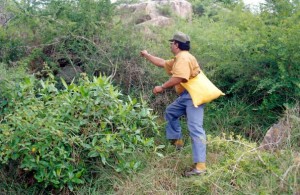
Unique Siddha medicinal preparations – For a medicine to be effective, the inorganic substances have to be brought to their atomic form. Siddhars developed the knowledge of bringing inorganic substances into atomic and ionic form which is easily absorbed by the system, when ground with herbal juices and put on the fire.
The specialized Siddha preparations are ‘parpam’, ‘chendooram’, ‘chunnam’, ‘mezhagu’. These are metallic and mineral preparations by transmutation processes of converting the metal to ashes and waxy constituency which exerts only therapeutic properties and devoid of any metallic traces. These are also the byproducts noticed during Siddhars Alchemical practices.
Muppu: Muppu has a distinct place in Siddha medicine. It is the combination of three rare salts which enhances the efficacy of any Siddha medicine. The preparation and ingredients are a closely guarded secret. It is also believed that ‘muppu’ also engender yogic concentration, a part of Siddha tradition.
Kaya kalpa: This is similar to ‘Rasayana chikitsa’ of Ayurveda and ‘gerontology’ of modern medicine. The word ‘kalpa’ means ‘able’, ‘competent’. When it is connected with ‘kaya’ or body, the term means competency or ability of the body. While in Ayurveda, rasayana is different from ‘vajeekarana’, kaya kalpa does not treat vajeekarana or the science of aphrodisiacs separately. When kayakalpa treatment is undertaken, the vigor of body and mind are restored and so there is no need for separate attention to vajeekarana. Siddhars were more concerned about the ultimate goal of living and less with worldly pursuit of sex. How ever, kayakalpa is very much capable of achieving the ends of both rasayana and vajeekarana.
Present status and scope: There are 6 Siddha medical colleges in Tamil nadu and one in Kerala catering to the needs of those who are interested in leaning siddha medicine course for 5 and half years and post-graduate specialization courses for two years.
Due to the popularity of ‘Siddha’ in India and abroad, the government of India has decided that Allopathic and Indian system of medicine should together contribute towards the development of the National Health Services. In addition, Indian system of medicine has also been recognized for the purpose of reimbursement of medical treatment under the central services.
The central council is executing its research programme in Siddha through Central research institute, regional research institute, mobile clinical research units, medico botanical survey unit etc. For the research in Siddha system, many research units were started at New Delhi, Bengalooru, Chennai, Pondycherry, Palayamkottai and Trivandrum.
“Food is medicine and medicine is food” and “Prevention is better than cure” were the slug lines of Siddhars and their followers. In the past people had the first hand information of the health and toxic effects of various species of flora and they provided the raw materials to the medical man for compilation. Thus Siddha system is a science perfected into an art, coupled with primitive intuitions into nature’s resources and secrets.
A close look at the eating habits of animals and birds reveals they eat food raw and ripe consisting of all the six tastes where as man eats only food stuff of four tastes, leaving bitter and astringent, which are pre-requisites for healthy circulation f blood. Bitterness fights against bacterial infection and astringency maintains the right blood quality and its constituents. Small quantities of agathi grandiflora, bitter gourd, seeds of solanum xanthocarpum, flowers of neem eaten now and then in small quantities, ward of many microbiological and bacterial infections.
It was a common knowledge for many Indian to possess the rare knowledge of various medicinal properties of ingredients in our culinary preparations and thus many an Indian woman trained in the traditional oriental ways of food preparation is an excellent and masterly physician without any master degree…
As a sampler, when excessive smoking causes dizziness, stomach disorders and makes the male suffer from nicotine poison, immediately the lady knows the sure cure for this disorder and gives him agathi grandiflora leaves, deliciously cooked at regular intervals and thus cures him of his malady, similarly she knows the properties of medicinal food recipes out of edible greens, leaves, barks, berries and other vegetables and the value of pepper, mustard, ginger and a host of other household provisions, rarely men of the past generations were perforce compelled to visit the medical experts and specialists who were scarce and few.
The leafy green mentioned above and several other bitter lasting foods and dishes as in margosa leaves and other plants and medicinal herbs, kill or exterminate the nematodes like thread worm, hookworm and tape worms and similar germs infesting the bowels and alimentary canal.
Religion is an indispensable stand in the web of Hindu Indian life that permeates through the daily life and character of Indians. The wise men of old India have deftly fused in their life certain ablutions, ceremonial rights and codes of conducts for normal healthy life. The Hindu Icons or the Pantheons of various Gods and particular modes of worship with leaves, flowers, milk, butter, honey, ghee, betel and nuts are symbolic and of great significance just as an abacus is used to induce children to learn arithmetic; these observations have been designed to promote for living a healthy life of body, mind and spirit. The practices may seem succinct or stupid to the modern civilization, but they were quite significant and sacred in the past.
The ancient wisdom of our ancestors should not be ridiculed because of our ignorance or non realization of their intrinsic worth. Let me present few examples of these rites and rituals and anyone with faithful, sincere interpretations of facts will come to the conclusion as how the medicine, art, culture, rituals and the way to healthy living with longevity were interwoven during prehistoric period.
While worshipping Lord Shiva, during the chanting and pooja, beal leaves (aegle marmelos) are offered to the Deity and after worship, some of these leaves are eaten by the devotees as ‘Prasad’ (blessings from God).this intake of beal leaves when followed regularly ensures good health by proper digestion and assimilation of food. It also removes the toxins in the body and is a blood purifier.
While worshipping mother Durga, the Goddess is being invoked with neem leaves and later consumed by the devotees. This is manna from heaven when consumed regularly in small quantities with its essence, as it proves wonderful disinfectant and germicide. Regular intake of this herb in any kind will be a sure elixir of life.
The foremost Hindu Deity Lord Ganesha, first to be propiated before commencing any important human project as per the belief. The Lord is worshipped with a particular type of grass – ‘Doorva’ (cynodon dactylon), which has been proven scientifically to possess the power of generating electricity in minute degree. When handling it augment one’s personal magnetism. It is of high medicinal value when administered orally. Another instance may seem superstitious but not without truth. Before initiating any auspicious rites, it is customary to make a crude image of Lord Ganesha with a fresh paste of either cow dung or turmeric paste and stick a small tuft of Doorva grass leaves to the person of the Deity. This image is abandoned and left to wither after performing pooja. Normally wet paste of either cow dung or turmeric when left exposed to atmosphere will be infested with bacteria and this does not happen with the sanctimonious Lord Ganesh’s image with the bunch of Doorva grass. It may baffle one’s imagination and one may not believe, but seeing believes!!!
Selection of purified herbs for compound Siddha preparations – Mango leaves are used in the worship of the Goddess of rivers- Ganga devi. Festoons of mango leave adorn temples and houses during festivals. A tuft of mango leaves dipped in the sacred water after worship Ganga is sprinkled over all the places of the premises and on the devotees. This serves as purificatory process. A decoction of mango leaves taken at regular intervals will cure many bodily illnesses.
The people of ‘Vishnu cult’ perform pooja of the Lord with ‘Tulsi leaves’ (ocimum sanctum). After the pooja 3-5 leaves are consumed as ‘Prasad’… these leaves consumed at regular intervals will build strong muscles and bones. It is also a wonderful prophylactic drug for many ailments.
Likewise ‘Lord Brahma’, the Creator is worshipped with country fig leaves and fruits. The intake of these leaves and fruits will restore the correct blood constituents due to its astringent properties. These few narrations give a glimpse into the astounding possibilities of simple herbal preparations with no intricate knowledge of orthodox Siddha compounds with elaborative preparation processes. With a primary knowledge of hundreds of species in vegetable kingdom and the knowledge of physical body, its physiology and anatomy and simple rules of health and hygiene, any layman can lead a healthy life free from diseases.
Similarly periodic oil-bath promotes real rejuvenation of the physical body, though the modern medical conception put it that the diet we take orally contain oily matter which could suffice for a healthy body. Folds and wrinkles disappear in due course, when taken regular oil bath, giving the person youth, glow and luster. There are many illustrations of Siddhars stating by proper physical exercise and perfect breathing, food habits, evacuation of bowels, many undesirable conditions get eliminated. Siddhars have also propounded many prescriptions for rejuvenating the body and this bulk is called ‘Kayakalpa’, literally meaning a body like stone. The most intriguing, perplexing and unique phenomenon of Siddha system of medicine is the ‘Kayakalpa group of herbs’ which is not found in any other systems of medicine in the world. These ensure physiotherapy, psychotherapy, preventive and curative aspects of diseases and pave the way for longevity. There are 108 kayakalpa herbs; many among them in daily use are onion, garlic, ginger, lemon, jequirity and turmeric etc.
On close scrutiny one will struck with much wonder as in how those days where there was not even a microscope, the ancient Siddhars were capable of describing the use of such things rich in vitamins, minerals, proteins, hormones, electrolytes and other nutrients grouped them as disease preventives for promoting longevity.
To conclude these scriptures and sciences embody all that was required for human advancements in the world and a study of these ancient literatures will be really productive of lasting benefits. We may confess that we are still ignorant of many things connected with the ancient thoughts and beliefs and it is our ignorance that belittles their greatness.
The revival of ancient systems, be they in medicine or moral code, requires a faithful interpretation of the views of the originators of these sciences and such a movement will be useful and indeed found necessary since modern discoveries still are incomplete and look forward to the ancient works for the ‘MISSING LINKS’.
The Siddha system of medicine deserves careful and faithful examination since it has in itself many principles which may go a long way to supply the defects and deficiencies of modern conceptions and that may save Indian society and generally the world from many a besetting peril…..
Exciting possibilities ahead: In conclusion, it must be said that Siddha medicine offers exciting avenues for investigations in the light of modern science and technology. Such investigations can lead to significant breakthroughs not just in herbal pharmaceuticals, but in conceptual and practical knowledge as well, with far-reaching benefits for the existing system of healthcare as a whole. But such investigative studies must necessarily be multidisciplinary, with full involvement of scholars in ancient Tamil scriptures, veteran Siddha Vaidyas, and tribal folks with knowledge of field work, historians and several other members of Siddha medical community at the local level. Exploration of the goldmine of Siddha knowledge and wisdom is certainly worth substantial investments of human and financial resources.
– Authored by Siddha vaidya P.S.Narasimha swamy,
Director- Agasthya Siddha literature research centre,
#1495, Dr. Ambedkar Road,
Krishna murthy puram, Mysore-5700 04 Cell: 09845167119
e-mail: swamy_siddha@yahoo.com , agasthyaswamy@gmail.com
Meet Narasimha Swamy (Agasthya Siddha), friends, fans at fb <
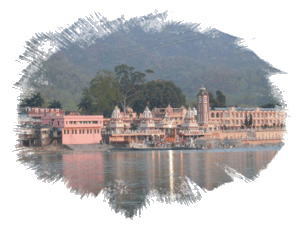
 Mamata Banerjee @MamataOfficial
Mamata Banerjee @MamataOfficial Climate Himalaya @chimalaya
Climate Himalaya @chimalaya LAHURNIP @LAHURNIPNepal
LAHURNIP @LAHURNIPNepal  European Voice @EuropeanVoiceEV
European Voice @EuropeanVoiceEV CEO @corporateeurope
CEO @corporateeurope Tax Justice Network @TaxJusticeNet
Tax Justice Network @TaxJusticeNet Transparency Int’l @anticorruption
Transparency Int’l @anticorruption

 Toby Cadman @tobycadman
Toby Cadman @tobycadman  ERRC @ERRCtweets
ERRC @ERRCtweets  Golnaz Esfandiari @GEsfandiari
Golnaz Esfandiari @GEsfandiari Joanna Paraszczuk @joaska_
Joanna Paraszczuk @joaska_ Birgit Schmeitzner @BSchmeitzner
Birgit Schmeitzner @BSchmeitzner
 Kevin Jon Heller @kevinjonheller
Kevin Jon Heller @kevinjonheller  Jan Kooy @KooyJan
Jan Kooy @KooyJan 
 Vesna Jaksic Lowe @vesnajaksic
Vesna Jaksic Lowe @vesnajaksic  DK Matai @DKMatai
DK Matai @DKMatai Dinamalar @dinamalarweb
Dinamalar @dinamalarweb  TI Cambodia @ticambodia
TI Cambodia @ticambodia PHR @P4HR
PHR @P4HR  Dein Ayurveda Net @DeinAyurvedaNet
Dein Ayurveda Net @DeinAyurvedaNet 